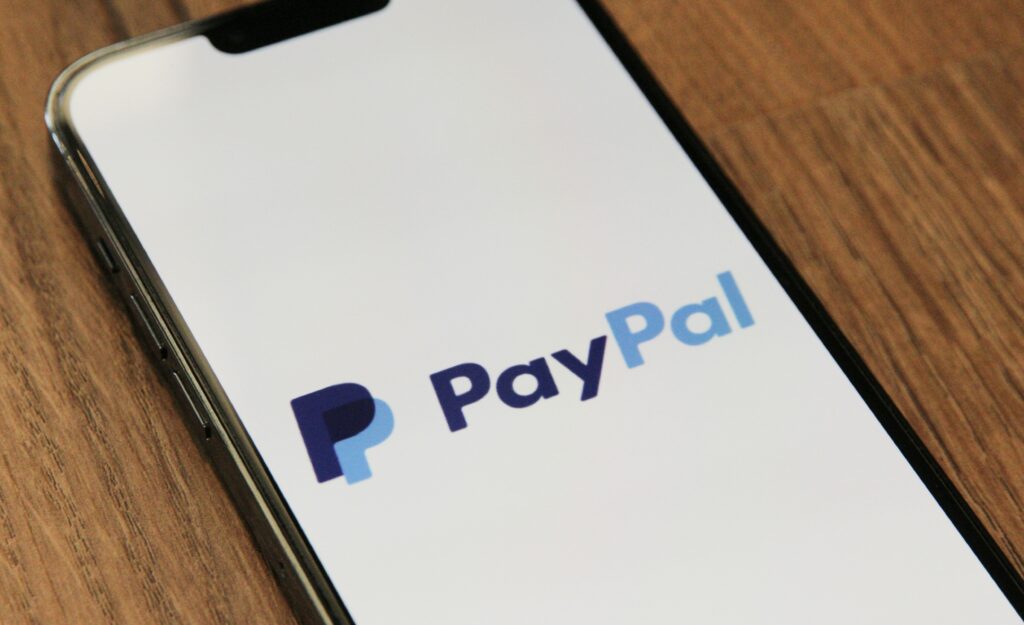Is Stripe safe? Most online business owners look at Stripe and see a safe, secure, all-in-one solution to their payment needs. Stripe handles billions of dollars in transactions for companies worldwide.
But popularity doesn’t equal security.
Payment security is one of the most important aspects of a thriving business. Every time a customer enters their credit card details, they’re trusting you with their financial information. One security breach can shatter that trust and ruin your business.
Here’s the hard truth: while Stripe offers many security features, it is still a risky choice for most businesses. A dedicated merchant account often provides better protection and stability for your company’s financial health.
What is Stripe?
Stripe is a third-party payment processor that allows businesses to accept online payments without their own merchant account. Unlike traditional payment solutions that require you to establish a direct relationship with a bank, Stripe simplifies the process significantly.
As a payment aggregator, Stripe groups all its users under one big master merchant account, making it easy for anyone to start accepting payments quickly. This shared approach means your business transactions flow through Stripe’s account rather than through an individual merchant account of your own.
This aggregation model does offer advantages for new businesses. You won’t face the:
- lengthy application process,
- detailed credit checks,
- or financial stability reviews.
These are typically required when opening a traditional merchant account. Instead, you can sign up with Stripe and begin processing customer payments almost immediately.
Stripe handles all aspects of electronic payment processing in one integrated platform. When customers make a purchase, Stripe captures their payment information, communicates with card networks and banks to verify the transaction, and transfers the approved funds to your account.
This all-in-one approach eliminates the need to work with multiple payment service providers.
With support for more than 135 global currencies and various payment methods including credit cards, debit cards, and digital wallets, Stripe is a great initial step for new businesses as well as a good backup for established businesses.
GET YOUR OWN DEDICATED MERCHANT ACCOUNT
How Stripe Works
When a customer pays at checkout, Stripe securely grabs their info and makes sure the money goes where it needs to go. The process happens in three main steps, all working behind the scenes to keep transactions smooth and secure.
1. Customer Submits Payment Info
First, your customer provides their payment information on your website or app. Stripe immediately encrypts this sensitive data through its payment gateway, protecting card details from potential threats.
This encrypted information then moves to an acquiring bank that processes the transaction on your behalf.
2. Bank Approves or Declines
Next, Stripe sends the payment through the appropriate card network (like Visa or Mastercard) to the customer’s issuing bank. The bank quickly approves or declines the transaction based on available funds and security checks.
This approval signal travels back through the same path, letting your customer know if their payment succeeded.
3. Transfer of Funds
Once approved, funds transfer from Stripe to your business bank account. The entire process happens seamlessly, with Stripe handling all the communication between banks, card networks, and your business.
Payment Methods
Stripe supports a wide range of payment methods. Beyond standard credit and debit cards from global networks like Visa, Mastercard, and American Express, Stripe processes payments through:
- Digital wallets (Apple Pay, Google Pay)
- Buy now, pay later options (Affirm, Afterpay/Clearpay, Klarna)
- Bank transfers and debits (ACH, SEPA, Bacs)
- Local payment methods (Alipay, Bancontact, iDEAL)
- Cryptocurrency payments
Fraud Prevention
To protect both you and your customers, Stripe employs some level of automated fraud detection measures. Their system, Stripe Radar, uses machine learning algorithms to identify suspicious transactions before they process.
This technology analyzes transaction patterns across Stripe’s global network to spot potential fraud. You can also create custom rules to match your specific business needs, preventing both fraud and false positives that might block legitimate sales.
Stripe Radar is quite trigger happy. If you are dead-set on using Stripe, then you need to configure its settings for your business.
Compliance
When you use Stripe, you benefit from their built-in compliance features that help meet industry standards for data security and privacy. This saves you from handling sensitive payment information directly, reducing your compliance burden while keeping your customers’ data safe.
OPEN A BETTER BACKUP PAYMENT SOLUTION
Why Stripe Might Not Be Safe for Your Business
Stripe can shut down your account without warning, leaving you in a tough spot. This affects thousands of merchants every year, particularly those in high-risk industries that make up about 90% of online businesses.
When Stripe terminates your account, you’ll typically receive just one automated email with minimal explanation. The message usually cites a vague “violation of terms of service” without specific details about what triggered the closure. This lack of transparency makes it nearly impossible to address the actual issue.
Even worse, Stripe can freeze your funds for up to 180 days after closing your account. Imagine losing access to thousands of dollars of your business revenue for six months with no recourse. This sudden cash flow disruption can obliterate small businesses.
The appeal process is practically nonexistent. While Stripe claims to respond to customers within 24 hours, many merchants report this rarely happens. Most appeals fail because Stripe’s decision is typically final. Their customer support has earned criticism for being slow, impersonal, and difficult to access, often providing generic responses without concrete solutions.
High-risk businesses face the greatest danger. If your business involves:
- digital goods,
- subscription services,
- international transactions,
or operates in industries like:
- nutraceuticals,
- gaming,
- or affiliate marketing,
Stripe will view you as too risky. Even a temporary spike in sales or a few chargebacks can trigger Stripe’s automated risk systems to flag your account.
For businesses processing significant volume, this risk is unacceptable. Without a dedicated merchant account, you’re essentially building your business on unstable ground, where your payment processing can disappear overnight through no fault of your own.
Be Your Own Business
Stripe lumps everyone’s money together, while a dedicated merchant account keeps your funds separate and safe. This fundamental difference in how Stripe handles transactions impacts your business’s financial stability and risk exposure.
Stripe operates as a payment facilitator or “PayFac,” using a master merchant account to process transactions for all its users. When you use Stripe, your business becomes a sub-merchant under this master account. This means Stripe funnels multiple merchants and their associated transaction funds through their master accounts.
Benefits Comparison
When a customer makes a payment through Stripe, the funds first go into Stripe’s master merchant account. Stripe then distributes these funds to your business account after a holding period.
This aggregation model allows Stripe to onboard businesses quickly without the rigorous underwriting process typically required for individual merchant accounts.
In contrast, a dedicated merchant account provides your business with its own unique account for processing payments. When a customer pays you, the funds go directly into your merchant account. This direct path gives you more control over your funds and often allows for faster access to your money.
A dedicated merchant account offers several advantages:
- Greater stability: Your account is less likely to be suddenly frozen or closed due to other merchants’ activities.
- Tailored risk assessment: The account is underwritten based on your specific business, not a one-size-fits-all approach.
- Negotiable rates: With higher volumes, you can often secure better processing rates.
- Personalized support: Many providers offer dedicated account managers to help resolve issues quickly.
While Stripe’s aggregated model offers convenience, it can expose your business to higher risks. If Stripe detects suspicious activity from any of its sub-merchants, it might implement stricter controls or even freeze funds across multiple accounts.
With a dedicated merchant account, your funds are isolated from other businesses, reducing your exposure to such risks.
For high-volume or high-risk businesses, a dedicated merchant account often provides a more stable and secure payment processing solution. It gives you direct control over your funds and builds a true banking history that can be valuable for your business’s long-term financial health.
OPEN A DEDICATED MERCHANT ACCOUNT
Factors That Make You “High-Risk” to Stripe
Stripe sees your business as risky if you sell certain products or have too many refunds. Understanding what triggers Stripe’s risk assessment systems helps you protect your business from sudden account closures.
Industry and Business Model
Certain industries automatically face higher scrutiny from Stripe. These include:
- Adult entertainment
- Gambling and sports betting
- Pharmaceuticals and nutraceuticals
- Cryptocurrency services
- Travel and tourism
- Tobacco and vaping products
- Financial services (especially loans and credit repair)
- Legal services (particularly personal injury or bankruptcy)
- Telemarketing and telecommunications
- E-commerce (especially high-ticket electronics and jewelry)
Subscription-based business models also trigger higher risk flags due to their recurring billing nature and potential for disputes.
Chargeback and Fraud Rates
Stripe recommends keeping your chargeback rate below 0.75%, though card networks have different thresholds:
- Visa Dispute Monitoring Program: 0.90%
- Visa Fraud Monitoring Program: 0.75%
- Mastercard Excessive Merchant: 1.5%
Frequent chargebacks, refunds, or fraud cases will quickly flag your account for review. Even a sudden spike in disputes before reaching these thresholds can trigger monitoring programs.
Transaction Characteristics
Several transaction patterns increase your risk profile:
- High-ticket items ($100+) face greater chargeback risk
- Large volumes of international transactions
- Inconsistent processing volumes (sudden spikes in sales)
- Heavily regulated products or services
Geographic Factors
Your business location affects your risk rating. For example, businesses registered in regions with historically high fraud rates face stricter scrutiny.
Similarly, if many of your customers come from high-fraud regions, Stripe may flag your account.
Keep in mind that your business must use an account where it physically operates, not where it plans to sell. For example, if you’re in Estonia, you need an Estonian Stripe account even if you plan to sell only in the USA.
Business History
New or unestablished businesses without processing history face higher risk classifications. Stripe has less data to evaluate your reliability, making you a greater unknown risk.
Being classified as high-risk doesn’t necessarily mean your business operates unethically or illegally. Many legitimate businesses fall into high-risk categories simply due to industry characteristics or business models.
In fact, about 90% of e-commerce businesses are considered “high-risk,” making this classification extremely common for online merchants.
What matters most is how you manage this classification through transparent business practices, strong fraud prevention, and maintaining low chargeback rates.
OPERATE YOUR BUSINESS SECURELY
When It’s Okay to Use Stripe
Despite the risks I’ve outlined, Stripe can still play a valuable role in your payment processing strategy. You can use Stripe as a backup, for small transactions, or in specific areas where it works well. The key is understanding when and how to leverage Stripe’s strengths while minimizing exposure to its limitations.
As a Backup Processor
Smart businesses never rely on a single payment processor. By implementing Stripe as a secondary processor alongside your dedicated merchant account, you create a safety net for your business.
If your primary processor experiences technical issues or maintenance downtime, Stripe can keep your sales flowing without interruption. This redundancy ensures you never lose a sale due to payment processing problems.
For Low-Risk Products or Small Transactions
Stripe works well for processing low-ticket items that typically don’t trigger high levels of chargebacks. Consider using Stripe for:
- Products under $50
- Physical products you have an actual inventory for (not made-to-order)
- Items with historically low return or dispute rates
- One-time purchases rather than subscriptions
By limiting Stripe to these safer transaction types, you reduce the risk of account issues while still benefiting from their streamlined processing.
For Specific Geographic Regions
Stripe performs better in certain markets where fraud rates remain consistently low. You might implement a geographic strategy where you:
- Process payments through Stripe for customers in stable regions like the US, Canada, Australia, and Western Europe
- Route transactions from higher-risk regions through your dedicated merchant account
- Use Stripe’s international currency support for global customers in stable markets
This approach lets you capitalize on Stripe’s strengths in specific regions while protecting yourself from unnecessary risk.
For New Businesses Building History
If you’re just starting out, Stripe is an excellent steppingstone. The easy onboarding process allows new businesses to begin processing payments immediately while building transaction history.
This processing history becomes valuable when applying for a dedicated merchant account later.
Consider using Stripe during your first 3-6 months of operation while simultaneously applying for a dedicated merchant account. Once approved for your dedicated account, you can transition your primary processing while keeping Stripe as a backup.
The 20% Rule
A good rule of thumb: limit your Stripe processing to no more than 20% of your total transaction volume. This gives you the convenience of Stripe for appropriate situations while keeping your primary business operations on more stable ground with a dedicated merchant account.
START YOUR MERCHANT ACCOUNT APPLICATION
The Best Payment Solution Is a Dedicated Merchant Account
The best way to protect your business is to get your own merchant account. While Stripe offers convenience, a dedicated merchant account provides the stability and security that growing businesses need.
A dedicated merchant account creates a direct relationship between your business and an acquiring bank. This relationship means your funds flow directly to you without passing through a third-party aggregator’s master account. This direct connection reduces the risk of sudden account freezes or terminations that plague many Stripe users.
Here are the advantages you’ll benefit from with a dedicated merchant account:
- Fund Security: Your money remains separate from other merchants, eliminating the risk of being affected by others’ problematic transactions.
- Stability: Once approved, your account rarely faces sudden closures or freezes, providing peace of mind and predictable cash flow.
- Tailored Terms: Your account terms reflect your specific business model rather than one-size-fits-all policies.
- Personalized Support: Access to dedicated account managers who understand your business and can help resolve issues quickly.
- Negotiable Rates: As your volume grows, you can often negotiate better processing rates, potentially saving thousands in fees.
- Chargeback Protection: Many dedicated merchant accounts offer more robust chargeback prevention tools and higher tolerance thresholds.
At DirectPayNet, we specialize in securing merchant accounts for businesses that payment processors like Stripe consider “high-risk.” Our team understands the unique challenges faced by businesses in industries like nutraceuticals, subscription services, digital products, and many others that struggle with traditional payment processors.
We work with a network of acquiring banks and payment processors who specifically cater to high-risk industries. Our relationships with these providers allow us to match your business with the right payment solution that understands your business model and provides the stability you need.
Don’t wait until Stripe freezes your account to take action. Contact us today to secure a dedicated merchant account that protects your business and supports your growth. Our application process is straightforward, and our team will guide you through every step, from initial application to account setup.
Take control of your payment processing now and build your business on a foundation that won’t disappear overnight.
Frequently Asked Questions About Stripe
Q1: Is Stripe suitable for online businesses?
Not typically for high-risk businesses, which make up about 90% of online businesses. While Stripe offers robust security features and encryption for payment processing, their aggregated account model poses significant risks for many business types.
Q2: What happens if Stripe closes my account without warning?
You’ll need to quickly find an alternative payment processor, such as a high-risk merchant account. Unfortunately, Stripe may freeze your funds for up to 180 days after closing your account, which can severely impact your cash flow. During this time, you’ll have limited options for appeal.
Q3: Can I use Stripe as a backup processor?
Yes, this is a prudent strategy. Using Stripe for approximately 20% of your transaction volume while processing your main volume through a dedicated merchant account provides redundancy without exposing your business to excessive risk.
Q4: Is Stripe safe for new businesses?
It can be a good starting point for new businesses to build payment processing history, but you should maintain low-risk transactions and begin applying for a dedicated merchant account as soon as possible to ensure long-term stability.
Q5: Are there regions where Stripe operates more effectively?
Yes, Stripe tends to perform better in regions with historically low fraud rates, such as te US, Canada, Australia, and Western Europe. You can strategically use Stripe for customers in these stable regions while routing transactions from higher-risk regions through your dedicated merchant account.
Q6: How does Stripe handle payment processing?
Stripe processes transactions through an 8-step process: transaction initiation, payment gateway encryption, transaction authorization, issuing-bank verification, authorization response, transaction completion, settlement, and reconciliation. Funds are added to your bank account based on your selected payout schedule.
Q7: How can I minimize the risk of Stripe closing my account?
Ensure you maintain low chargeback rates (below 0.75%), implement strong fraud prevention measures, avoid processing high-ticket items through Stripe, and maintain transparent business practices. Also, avoid industries on Stripe’s prohibited businesses list.
Q8: What payment methods can Stripe accept?
Stripe accepts major credit and debit cards including Visa, Mastercard, American Express, and Discover (US merchants only). They also support Apple Pay for customers checking out on supported devices.







